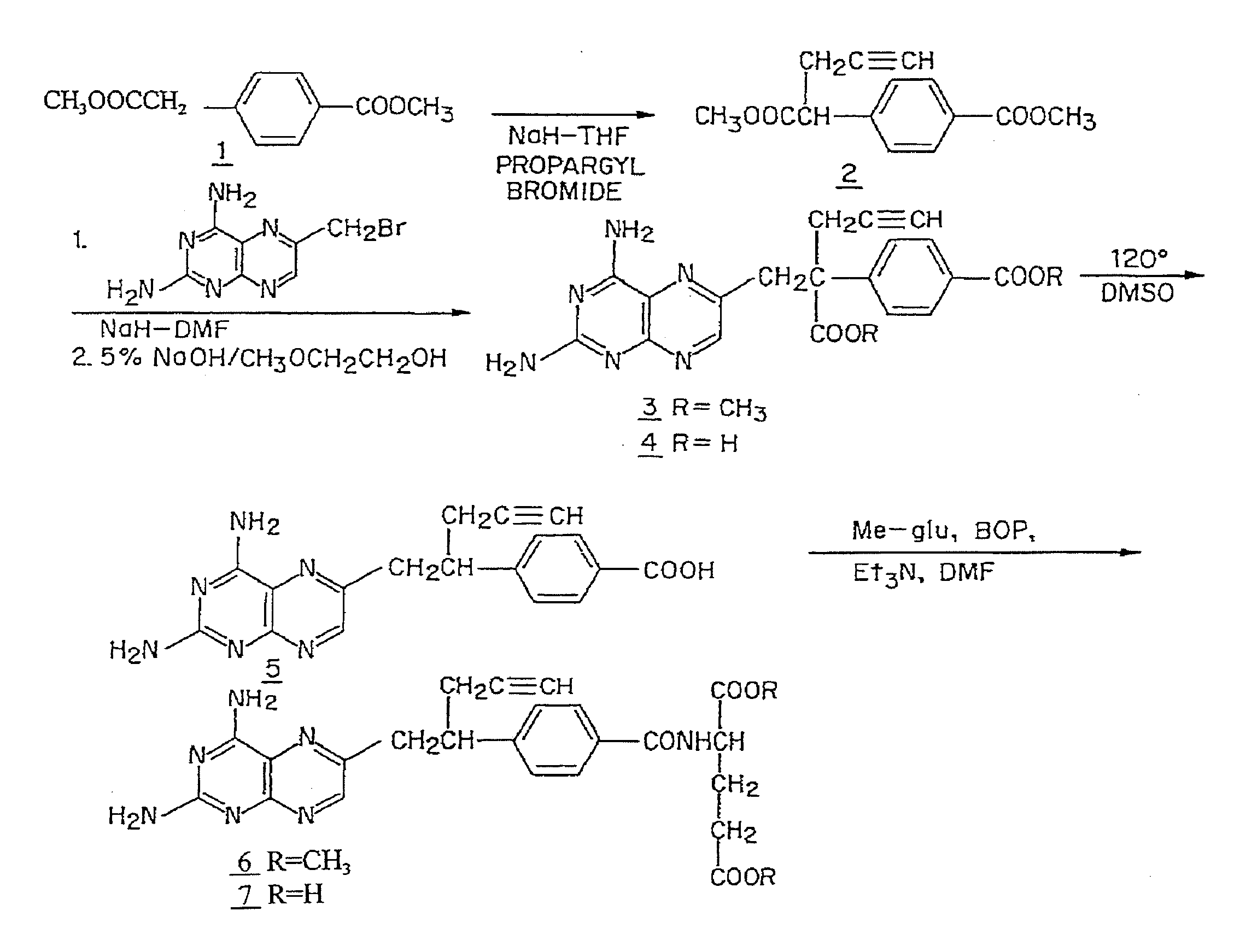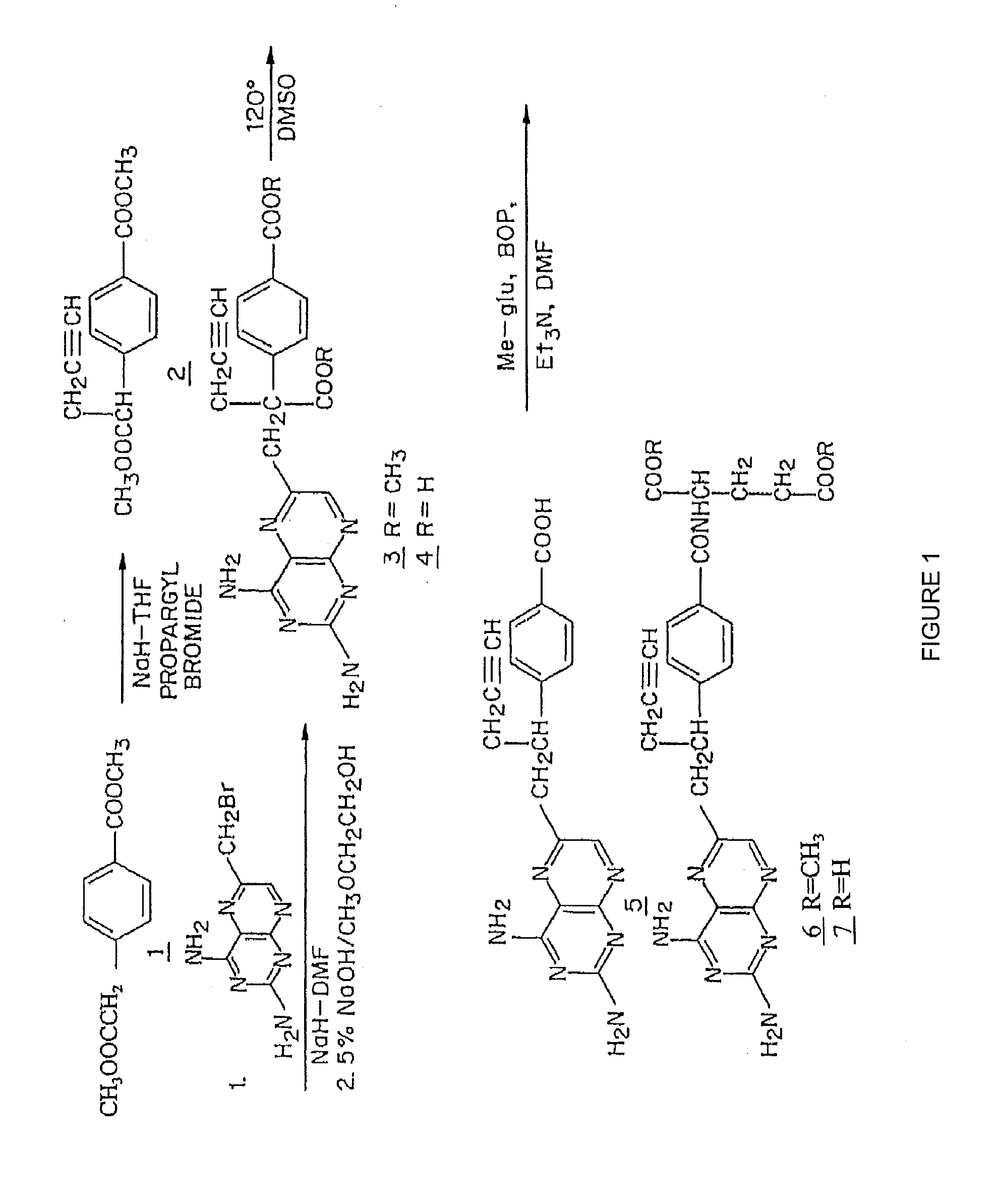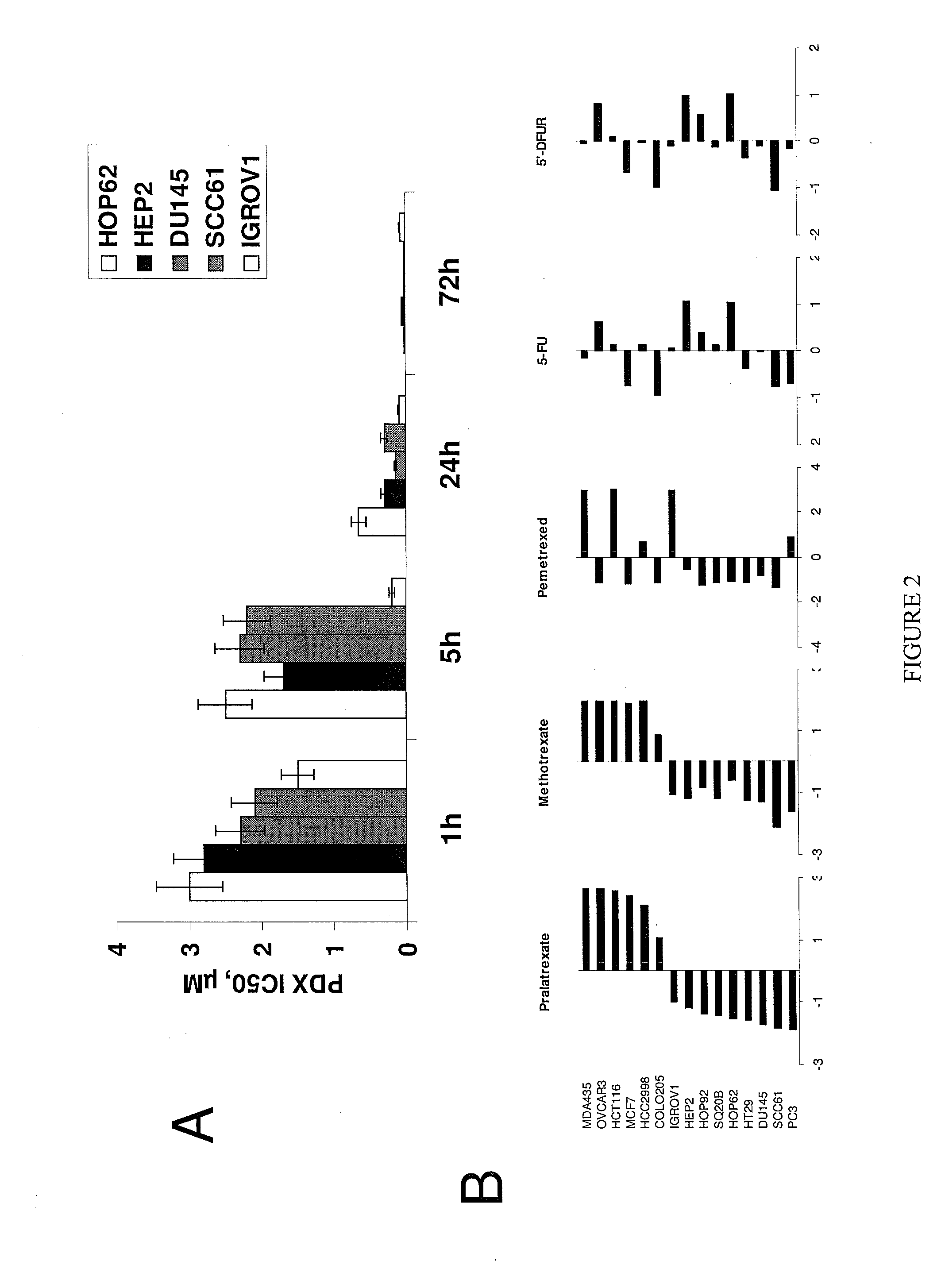Methods for assessing cancer for increased sensitivity to 10-propargyl-10-deazaaminopterin
a technology of 10propargyl and 10deazaaminopterin, which is applied in the field of methods to treat cancer with 10propargyl10deazaaminopterin, can solve the problems of individual differences in response to therapies, differential responses that can contribute to patients undergoing unnecessary, ineffective and even harmful therapy regimens
- Summary
- Abstract
- Description
- Claims
- Application Information
AI Technical Summary
Benefits of technology
Problems solved by technology
Method used
Image
Examples
example 1
[0100]FIG. 1 shows a synthetic scheme useful in preparing 10-propargyl-10-deazaaminopterin. A mixture of 60% NaH in oil dispersion (1.06 g, 26.5 mmol) in 18 mL of sieve-dried THF was cooled to 0° C. The cold mixture was treated with a solution of homoterephthalic acid dimethyl ester (5.0 g, 24 mmol. compound 1 in FIG. 1) in dry THF (7 mL), and the mixture was stirred for 1 hour at 0° C. Propargyl bromide (26.4 mmol) was added, and the mixture was stirred at 0° C. for an additional 1 hour, and then at room temperature for 16 hours. The resulting mixture was treated with 2.4 mL of 50% acetic acid and then poured into 240 mL of water. The mixture was extracted with ether (2×150 mL). The ether extracts were combined, dried over Na2SO4, and concentrated to an orange-yellow oil. Chromatography on silica gel (600 mL of 230-400 mesh) with elution by cyclohexane-EtOAc (8:1) gave the product a-propargylhomoterephthalic acid dimethyl ester (compound 2) as a white solid (4.66) which appeared by...
example 2
[0107]To explore the activity of pralatrexate across different solid tumor types, 15 human solid tumor cell lines were investigated for their sensitivity to the cytotoxic activity of pralatrexate.
[0108]Materials and Methods: Cell Lines
[0109]A panel of colon (HT29, HCT116, COL0205, HCC2998), breast (MCF7, MDA-MB-435), lung (HOP62, HOP92), ovarian (OVCAR3, IGROV1), prostate (DU145, PC3), and head and neck (SCC61, HEP2, SQ20B) human cancer cell lines was purchased from the ATCC (Rockville, MD) and National Cancer Institute collections. Cells were grown as monolayers in RPMI medium supplemented with 10% fetal calf serum, 2 mM glutamine, 100 units ml−1 penicillin and 100 μM ml−1 streptomycin.
[0110]Cell Cytotoxicity Assays
[0111]All the data generated was the result of three separate experiments performed in duplicate. Cell viability was determined using the MTT assay, which was carried out as described previously (Hansen, 1989). Briefly, cells were seeded in 96-well plates at a density of...
example 3
[0114]In order to establish potential correlations of pralatrexate sensitivity and resistance with expression of genes involved in apoptosis, cell cycle regulation and folate pathway signaling, mRNA expression of genes of interest were analyzed using real-time polymerase chain reaction (RT-PCR).
[0115]RT-PCR.
[0116]The theoretical and practical aspects of quantitative RT-PCR using the ABI Prism 7900 Sequence Detection System (Perkin-Elmer Applied Biosystems, Foster City, Calif., USA) are known to those skilled in the art. Results were expressed as n-fold differences in target gene expression relative to the TBP gene (an endogenous RNA control) and relative to a calibrator (1× sample), consisting of the cell line sample from the tested series that contained the smallest amount of target gene mRNA. Experiments were performed in duplicate.
[0117]The antiproliferative effects of pralatrexate were compared to those of methotrexate and several commonly used antimetabolites such as pemetrexed...
PUM
| Property | Measurement | Unit |
|---|---|---|
| temperature | aaaaa | aaaaa |
| temperature | aaaaa | aaaaa |
| temperature | aaaaa | aaaaa |
Abstract
Description
Claims
Application Information
 Login to View More
Login to View More - R&D
- Intellectual Property
- Life Sciences
- Materials
- Tech Scout
- Unparalleled Data Quality
- Higher Quality Content
- 60% Fewer Hallucinations
Browse by: Latest US Patents, China's latest patents, Technical Efficacy Thesaurus, Application Domain, Technology Topic, Popular Technical Reports.
© 2025 PatSnap. All rights reserved.Legal|Privacy policy|Modern Slavery Act Transparency Statement|Sitemap|About US| Contact US: help@patsnap.com



